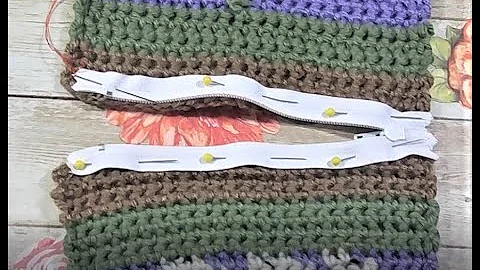Mastering Sickle Bar Mower: Adjustments and Fencing Maneuvers
Table of Contents
- Introduction
- The Parts of a Sickle Bar Mower
- The Drive Shaft
- The Pitman Drive Pulley
- The Sickle Bar Mower
- The Rock Guards and Ledger Plates
- The Hold Downs and Wear Plate
- Adjusting the Sickle Bar Mower
- Adjusting the Tilt of the Bar
- Adjusting the Height of the Cut
- Adjusting the Orientation of the Mower
- Inspecting and Maintaining the Knife Sections
- Inspecting and Maintaining the Rock Guards
- Mowing with a Sickle Bar Mower
- Techniques for Mowing Under Fences
- Tips for Efficient Mowing
- Dealing with Clogs and Trips
- Conclusion
🌾 Introduction
Welcome to Just a Few Acres Farm! In this article, we will delve into the fascinating world of sickle bar mowers. Sickle bar mowers are an essential tool for farmers, particularly those with smaller operations. In this comprehensive guide, we will explore the various parts of a sickle bar mower, discuss how to properly adjust and maintain it, and provide tips for efficient and effective mowing. So, let's get started and learn all about sickle bar mowers!
🚜 The Parts of a Sickle Bar Mower
The Drive Shaft
The drive shaft is a crucial component of the sickle bar mower. It connects the mower to the tractor's power take-off (PTO) and transfers the rotational energy necessary for cutting. Equipped with a slip clutch, the drive pulley on the drive shaft ensures that the mower stops if it encounters excessive resistance. This protects both the mower and the tractor from damage.
The Pitman Drive Pulley
Connected to the drive pulley, the pitman drive pulley contributes to the reciprocating motion of the sickle bar. With an eccentric-mounted pitman, the pitman drive pulley drives the knife back and forth, similar to the mechanism in a steam locomotive. The pitman drive pulley often requires adjustment and maintenance to ensure smooth operation.
The Sickle Bar Mower
At the heart of the sickle bar mower is the sickle bar itself. Composed of knife sections, rock guards, and ledger plates, the sickle bar is responsible for the actual cutting of the vegetation. The knife sections, individually replaceable if damaged, move back and forth between the rock guards and ledger plates, creating a scissor-like cutting action. Proper adjustment and maintenance of the sickle bar are essential for optimal cutting performance.
The Rock Guards and Ledger Plates
The rock guards and ledger plates play a critical role in the cutting process. The rock guards, typically made of metal, protect the knife sections from hitting rocks or other obstacles. They also guide the cut vegetation towards the back of the sickle bar. The ledger plates, usually serrated, provide additional cutting action and prevent excessive wear on the knife sections. Ensuring proper alignment and condition of the rock guards and ledger plates is essential for efficient cutting.
The Hold Downs and Wear Plate
To maintain a close and clean cut, hold downs and wear plates are utilized. The hold downs, located above the knife sections, apply pressure to keep the knife sections in contact with the ledger plates. This ensures a tight cutting action and prevents clogging. The wear plate, positioned underneath the hold downs, protects the bar from wear and tear caused by friction. Regular inspection and maintenance of the hold downs and wear plate are crucial to maintain cutting precision.
🔧 Adjusting the Sickle Bar Mower
Proper adjustment of the sickle bar mower is key to achieving a clean and efficient cut. Let's explore the essential adjustments that need to be made.
Adjusting the Tilt of the Bar
The first adjustment to consider is the tilt of the bar with respect to the ground. The bar should be approximately horizontal, ensuring that it is in the same plane as the ground. A tilted bar can result in uneven cutting and increased clogging. Most mowers have an adjustment mechanism at the drive end of the sickle bar to fine-tune the tilt.
Adjusting the Height of the Cut
The height of the cut can be adjusted by modifying the shoe positions at each end of the sickle bar. By raising or lowering the shoes, the operator can determine the desired cutting height. This adjustment is particularly important when mowing different types of vegetation or when aiming for a specific stubble height.
Adjusting the Orientation of the Mower
To achieve optimal cutting results, the orientation of the mower should be fine-tuned. This involves adjusting the positioning of the mower relative to the tractor. Various adjustments, such as the touch control hitch, can be utilized to tilt the mower slightly inward, ensuring that the front edge cuts before the rest of the sickle bar. Proper orientation reduces clogging and improves overall cutting efficiency.
Inspecting and Maintaining the Knife Sections
The knife sections are the cutting elements of the sickle bar mower and require regular inspection and maintenance. Each section should be checked for damage or wear, with any broken or bent sections replaced promptly. Proper contact between the knife sections and the ledger plates is crucial for effective cutting, preventing clogging and ensuring a clean cut. Lubrication should also be applied to minimize friction and maintain smooth operation.
Inspecting and Maintaining the Rock Guards
The rock guards are vital for protecting the knife sections from damage and guiding the cut vegetation. Regular inspection is necessary to detect any bent or damaged rock guards. These can be straightened using a hammer to ensure proper functioning. Additionally, the serrated ledger plates should be inspected, and worn-out plates should be replaced to maintain optimal cutting performance.
🌱 Mowing with a Sickle Bar Mower
Now that we have explored the various parts and adjustments of a sickle bar mower, let's delve into the art of mowing with this versatile tool.
Techniques for Mowing Under Fences
Mowing under fences can be a challenging task, but with the right technique, it becomes much easier. By swooping in and out of the fence posts without backing up, the process becomes efficient and time-saving. Skilled maneuvering allows for precise trimming, ensuring that all areas beneath the fences are properly maintained. The use of narrow-front tractors further enhances maneuverability, making the task a breeze.
Tips for Efficient Mowing
Efficiency is key when mowing with a sickle bar mower. Here are some tips to improve your mowing experience:
- Maintain Proper Adjustment: Regularly check and adjust the various components of the sickle bar mower to ensure optimal performance.
- Grease and Lubricate: Apply grease to the u-joints, pulley bearings, and any other moving parts to minimize friction and prolong the life of the mower.
- Avoid Wet Vegetation: Mowing damp or wet vegetation can lead to clogs and inefficient cutting. Aim to mow when the vegetation is dry.
- Monitor the Knife Sections: Keep an eye on the knife sections to ensure they are cutting cleanly. Replace any damaged or worn sections promptly to prevent clogging.
- Take Breaks for Maintenance: When mowing for extended periods, schedule regular breaks for cleaning and maintenance to prevent debris buildup and ensure continued optimal performance.
Dealing with Clogs and Trips
Clogs and trips are common issues that can occur while mowing with a sickle bar mower. A clog happens when the mower's cutting action is impeded by excessive vegetation, while a trip occurs when the mower encounters significant resistance, causing it to disengage temporarily. In the event of a clog or trip, it is important to stop the mower, clear any obstructions, and make any necessary adjustments to prevent further issues.
🌾 Conclusion
Sickle bar mowers are remarkable implements that have been a staple in farming for many years. By understanding the various parts, adjustments, and techniques associated with sickle bar mowing, you can maximize the efficiency and effectiveness of this tool. Remember to regularly inspect and maintain your sickle bar mower to ensure optimal performance and enjoy the satisfaction of a clean, well-manicured field. Happy mowing!
-resources
No external resources mentioned in the content.







